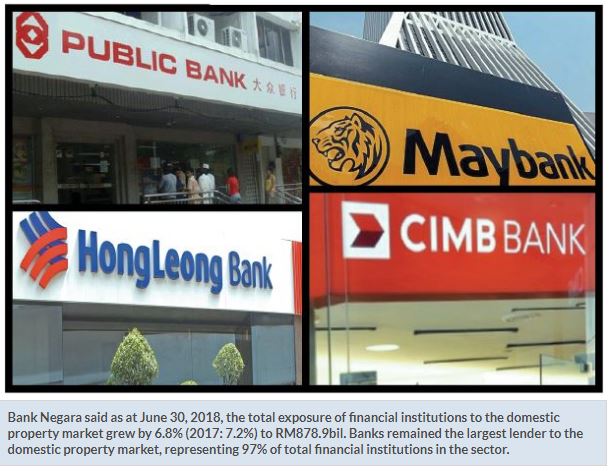Malaysia: Imbalance in property sector makes banks cautious on loans
PETALING JAYA: In view of the continuing imbalance in the overall property sector, dominated by the office, retail and residential segments, banks will remain cautious when lending to the office space and shopping complex segments, Bank Negara’s Financial Stability Review for the first half of 2018 says.
In the office and shopping complex segments, excess supply has persisted, with vacancy rates deteriorating further in the first quarter of 2018. Office space owners continue to offer rental holidays to attract tenants.
“Conditions remain challenging for companies in the oil and gas sector amid a slow pick-up in capital spending by major oil producers,” Bank Negara said.
Banks are expected to strengthen their assessment of financing proposals for new property development or construction projects.
This includes a more robust assessment of project viability, the financial strength of the developer and location-specific factors such as the effects of the development on properties in the surrounding areas.
As a result of this, loan approval rates for office and shopping complex developments were correspondingly lower at 63.5% and 69.5%, respectively, during the January-June period. This compares with 72.5% and 75.8%, respectively, a year ago.
Bank Negara said the incoming supply of office space in the Klang Valley in the next four years remained sizeable at 37.9 million square feet as at June 30, 2018, compared with 38.1 million sq ft a year ago.
In the shopping complex segment, developers have either deferred or downsized their projects to secure higher occupancy amid softer market conditions.
The report said in the Klang Valley, Johor and Penang, downward pressure on occupancy and rental rates continued to be exerted, although rental rates remained broadly unchanged.
The number of commercial properties — shops, shopping complexes and office space — transacted in the first quarter of 2018 declined by about 9% compared with 8% in the last quarter of 2017, although values transacted saw an increase of 15.6%.
In the residential segment, the mismatch between housing demand and supply, particularly in the affordable segment, continued to exert upward pressure on house prices.
Only a quarter of newly launched units between 2016 and the first quarter of 2018 were priced below RM250,000.
This compares with 35% of households who can only afford houses in the below RM250,000 price range. This has resulted in unsold units stacked at 146,196 units as at March 31, 2018, although demand for houses remain firm.
An uptick in impaired residential and non-residential loans was seen, mainly for properties valued at above RM500,000, with higher incidents of impairments observed among the self-employed borrowers who are more exposed to income variability.
Bank Negara said although household debt has shown a more sustainable trend, largely due to measures implemented since 2010, it is of the view that existing macroprudential measures remain relevant.
Although borrowers continue to be supported by sustained income growth of households and healthy financial positions of businesses, pockets of risk remain.
Impaired loans have grown a little faster among households that are more exposed to income variability and facing higher cost pressures, although impairment levels remain low.
Bank Negara said as at June 30, 2018, the total exposure of financial institutions to the domestic property market grew by 6.8% (2017: 7.2%) to RM878.9bil.
Banks remained the largest lender to the domestic property market, representing 97% of total financial institutions in the sector.
Source: https://www.thestar.com.my/business/business-news/2018/09/27/banks-cautious-on-two-segments/#UlP2KqLlGrp5RbcF.99


 English
English




